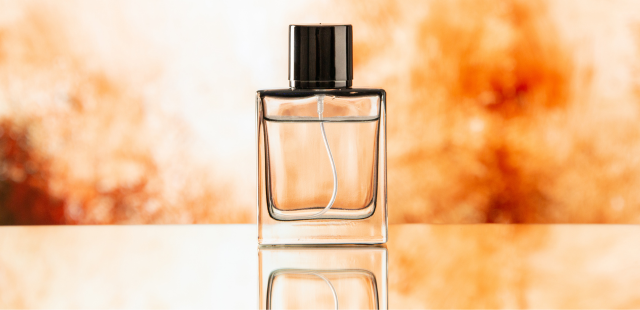Welcome to the captivating world of perfumery, where scents weave intricate stories and evoke deep emotions. In this guide, we will delve into the enchanting realm of fragrance categories, perfume layering, and the allure of luxury perfumes. Join us as we explore the art of olfaction from 1000 to 1100 AD.
I. Fragrance Categories:
A. Floral
In the early 1000s, floral fragrances were already celebrated for their timeless elegance.
Jasmine rose, and violet were popular floral notes, each lending its unique charm to perfumes.
Floral scents were adored for their romantic and feminine qualities.
B. Oriental
The 7th-century Middle Eastern influence continued to shape oriental fragrances.
Spices like cinnamon and exotic resins like frankincense created warm, sensual scents.
Oriental perfumes transported wearers to distant lands with their opulent compositions.
C. Woody
Fragrances rooted in woody notes like cedar and sandalwood gained popularity.
Woody scents symbolized strength and resilience, making them ideal for both men and women.
These fragrances often had earthy undertones, connecting wearers to nature.
D.Citrus
These scents are zesty and invigorating, reminiscent of fruits like lemons, oranges, and bergamot, offering a lively and uplifting experience.
E. Fresh
Crisp and clean, fresh scents include notes like ocean breeze, rain, and green grass, delivering a revitalising and pure sensation.
F. Gourmand
These aromas are sweet and delicious, with vanilla, caramel, and chocolate undertones reminiscent of delicious pastries.
G. Herbal
These aromas are created by combining the essence of aromatic herbs such as lavender, sage, and rosemary to create a soothing and herbal sensation. These Herbaceous components give an aroma that is fresh and uplifting.
II. Perfumery Guide
A. Ingredients
Perfumers in the 1000s utilised natural ingredients like herbs, flowers, and spices.
Distillation techniques improved, allowing for the extraction of essential oils.
These oils formed the core of perfumes, blending seamlessly into various categories.
B. Techniques
Perfume-making was a carefully guarded craft passed down through generations.
Blending, maceration, and ageing were essential techniques for achieving desired scents.
Skilled perfumers could create complex, long-lasting fragrances.
III. Perfume Layering
A. Building Complexity
Perfume layering was an art, with wearers combining multiple scents for a unique signature.
Base, middle, and top notes were strategically layered to create depth and character.
This technique allowed for personalisation and a long-lasting fragrance experience.
B. Harmonious Combinations
Experimentation was encouraged as people mixed different fragrances.
Layering floral with oriental or woody notes offered intriguing olfactory journeys.
Perfume layering allows individuals to express their personalities through scent.
IV. Luxury Perfume
A. Extravagant Ingredients
In the 1000s, luxury perfumes were defined by rare and precious ingredients.
Perfumers sourced ingredients from far-flung regions, elevating their creations.
Gold, gems, and intricate bottle designs reflected opulence.
B. Royal Patrons
Kings and queens were patrons of the perfumery, fostering the development of luxury scents.
Perfume houses catered to royalty, creating bespoke fragrances for discerning clients.
Luxury perfumes were status symbols, embodying sophistication and exclusivity.
The Influence on Modern Perfumery
A. Legacy Of Tradition
The perfumery techniques and fragrance categories from the past continue to inspire modern perfumers.
Today’s scents often pay homage to the classics, blending old-world charm with contemporary innovation.
B. Sustainable Practices
Perfumery has evolved to incorporate sustainable practices, reflecting a growing awareness of the environment.
Natural and eco-friendly ingredients are increasingly preferred, aligning with the values of the present era.
C. Personal Expression
Perfume remains a powerful means of personal expression, allowing individuals to convey their moods, personalities, and aspirations.
The art of layering endures, empowering fragrance enthusiasts to craft unique olfactory experiences.
VI. Exploring Fragrance in the 21st Century:
A. Niche Perfumery
Niche perfumers have emerged, offering distinctive and artisanal scents that break away from mass-produced fragrances.
These creations cater to those seeking exclusivity and authenticity in their perfume choices.
B. Fragrance Communities
Online communities and forums provide platforms for perfume enthusiasts to connect, share, and discuss their favourite scents.
These communities foster a sense of belonging and knowledge exchange among fragrance aficionados.
C. Scent Technology
Advancements in scent technology allow for the replication of elusive and rare ingredients, expanding the possibilities of scent creation.
Perfumers can now experiment with new olfactory dimensions.
Frequently Asked Questions
1. How were perfumes made in the 1000s?
Perfumes were traditionally prepared using natural components like herbs, flowers, spices, and resins in the 1000s. During this time, distillation techniques advanced, allowing perfumers to extract essential oils, which served as the base for perfumes.
2. How can I choose the right perfume for myself based on the 7 Olfactory Families?
To choose the right perfume, consider your personal preferences and the occasion. If you prefer floral and feminine scents, explore the Floral family. If you’re looking for something warm and exotic, try Oriental fragrances. Experimentation and sampling are key to finding your signature scent.
3. What defines luxury perfumes, and how have they evolved over time?
Luxury perfumes are defined by the use of rare and precious ingredients exquisite packaging, and often cater to a discerning clientele. Over time, luxury perfumes have evolved to incorporate sustainable practices while still maintaining their exclusivity and craftsmanship.
4. What are some tips for making fragrances last longer on the skin?
To make fragrances last longer, apply them to pulse points (wrists, neck, behind the ears) and moisturise your skin before application. Perfume layering with matching scented lotions or oils can also extend the longevity of a fragrance.
5. What role do fragrance communities play in the world of perfumery today?
Fragrance communities provide a space for perfume enthusiasts to share their passion, discover new scents, and exchange knowledge. They offer valuable insights, reviews, and recommendations, fostering a sense of community among fragrance lovers.
6. Can you recommend some niche perfume brands for those seeking unique scents?
Some popular niche perfume brands known for their unique and artisanal scents include Tiger, Ami Amie, Art Life, Bagheera, etc. Exploring these brands can lead to exciting olfactory discoveries.
In Conclusion
Fragrance has always been a form of expression and enchantment that transcends time and leaves an unforgettable impression on history. So, the next time you apply your preferred scent, remember that you’re taking part in a centuries-old practice that continues to enchant the senses.



